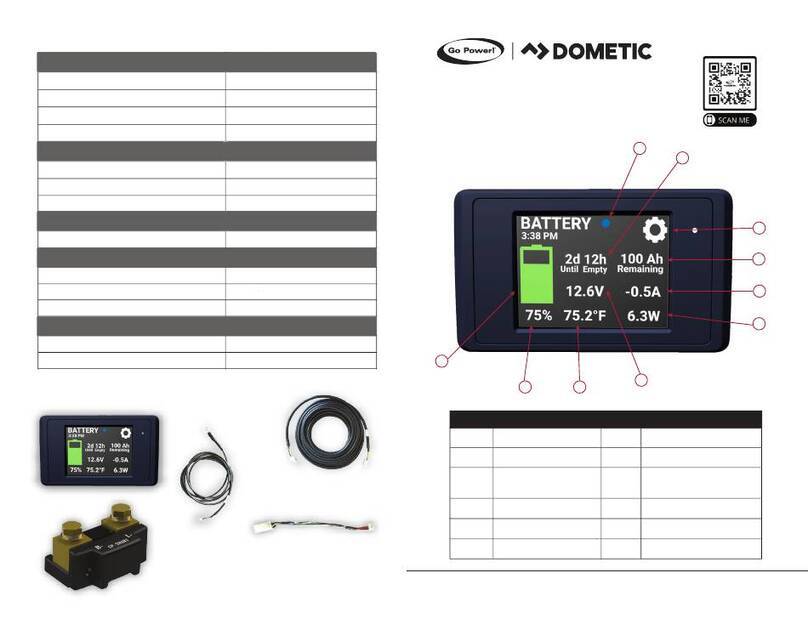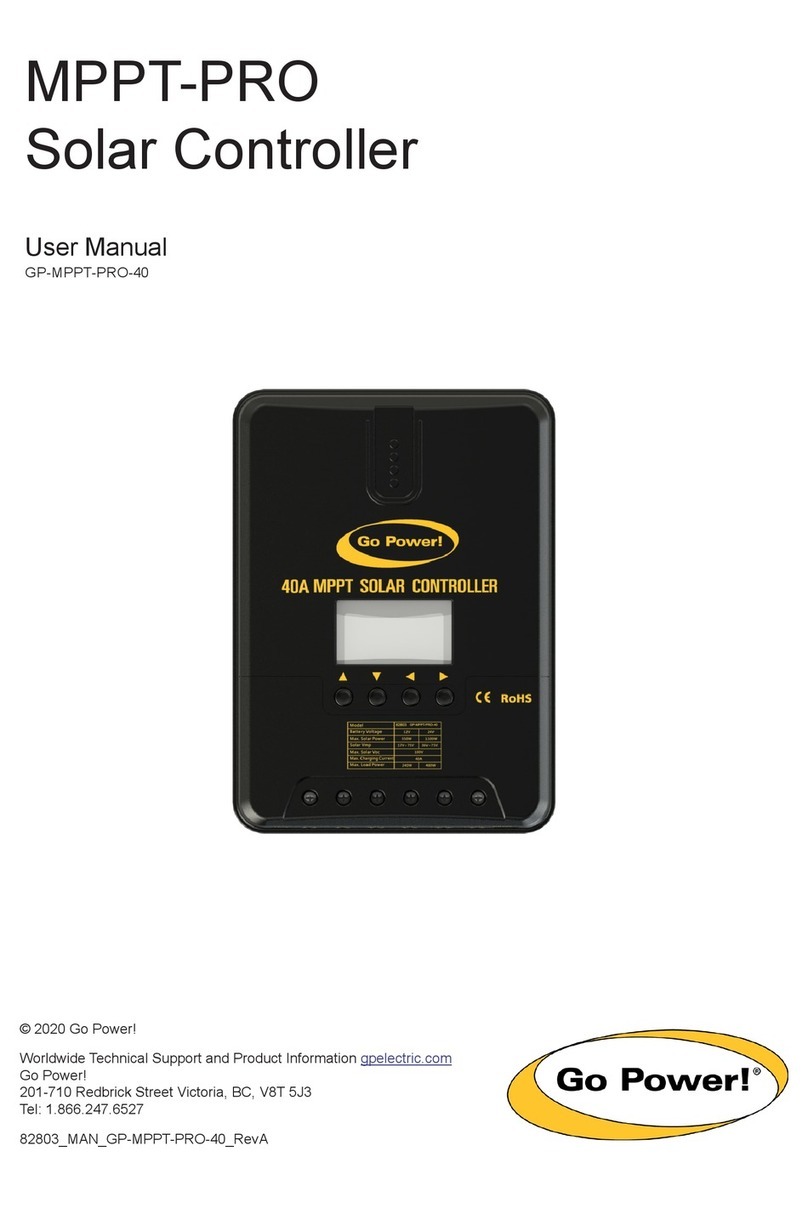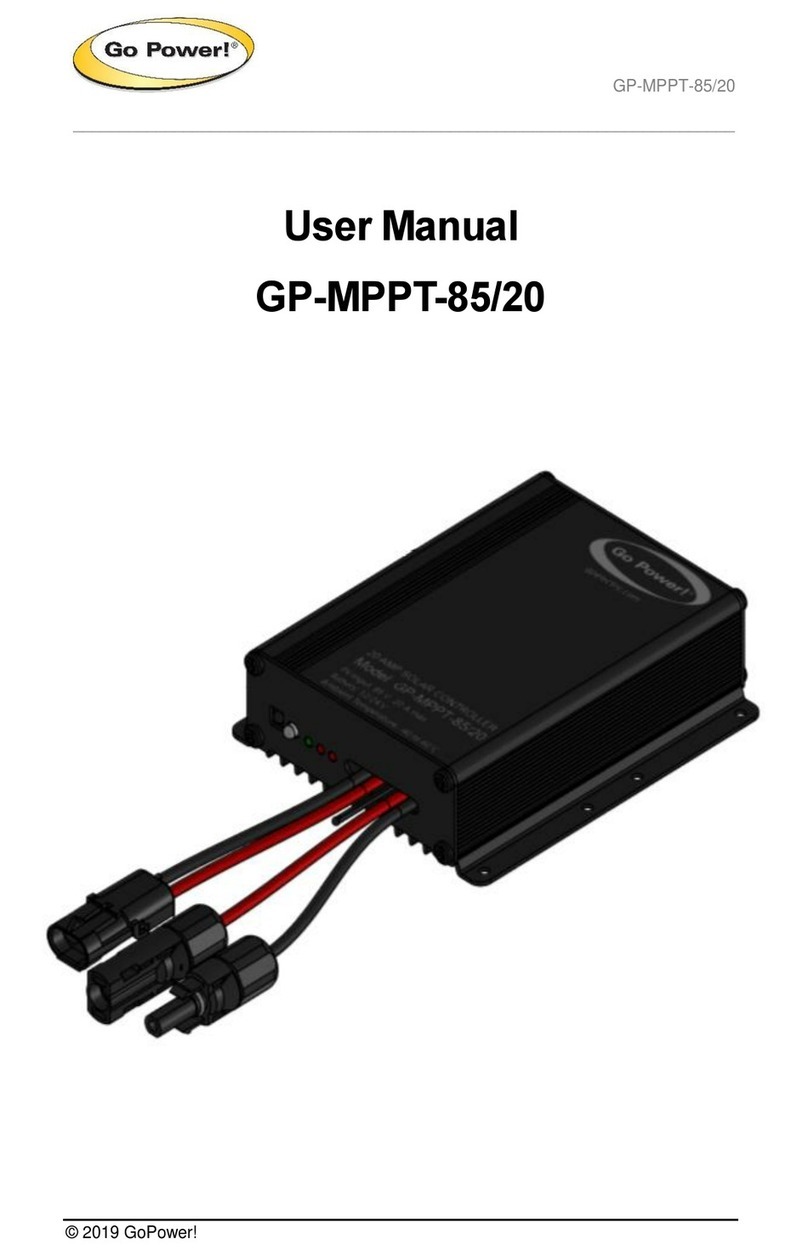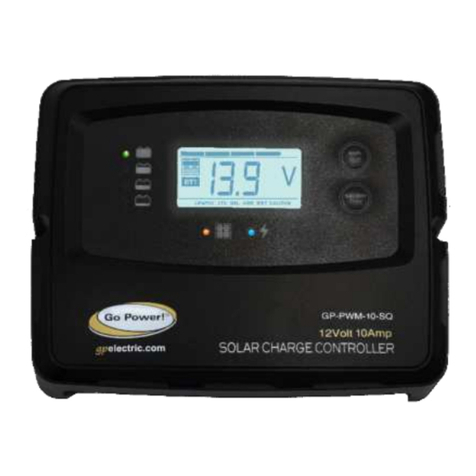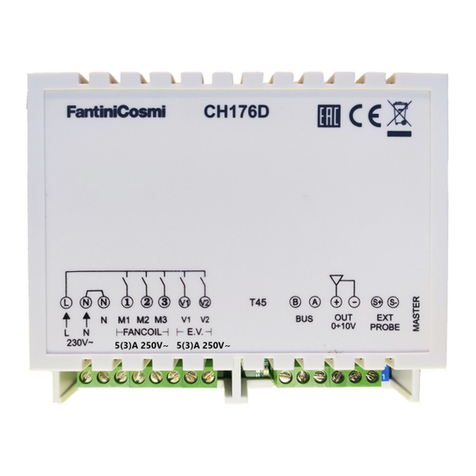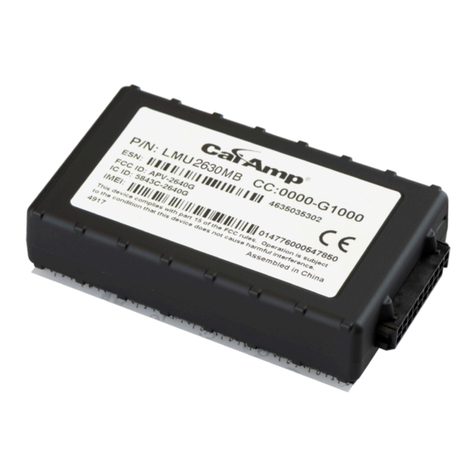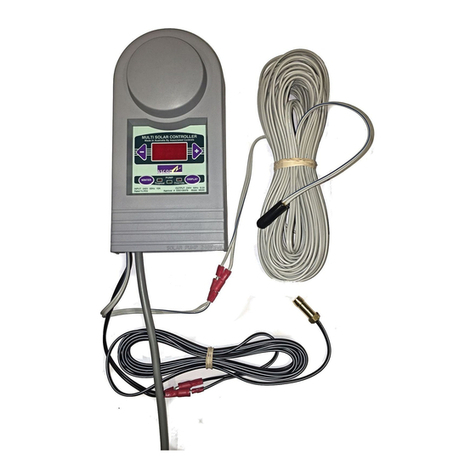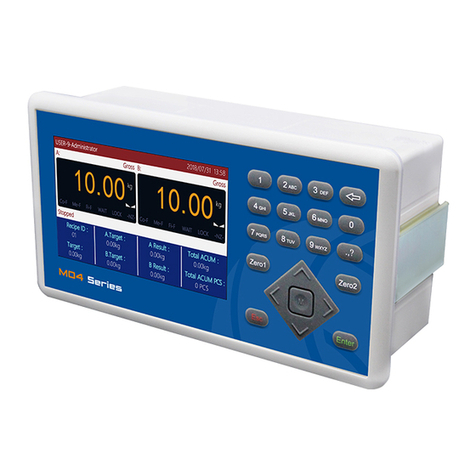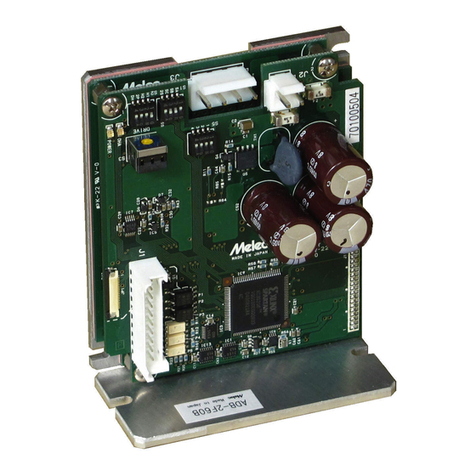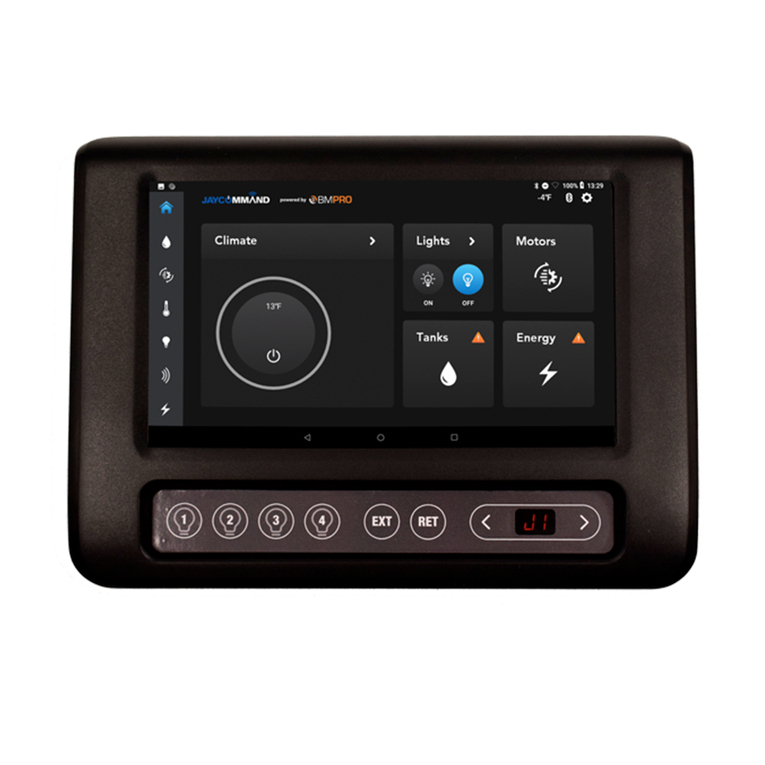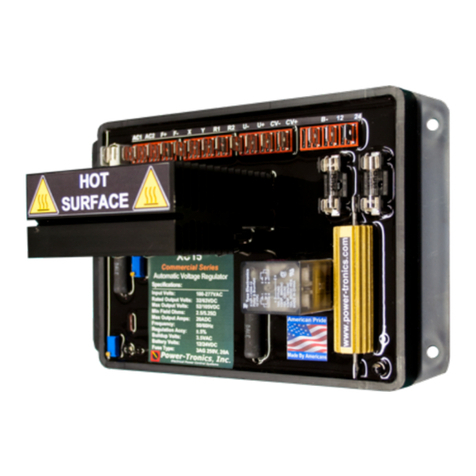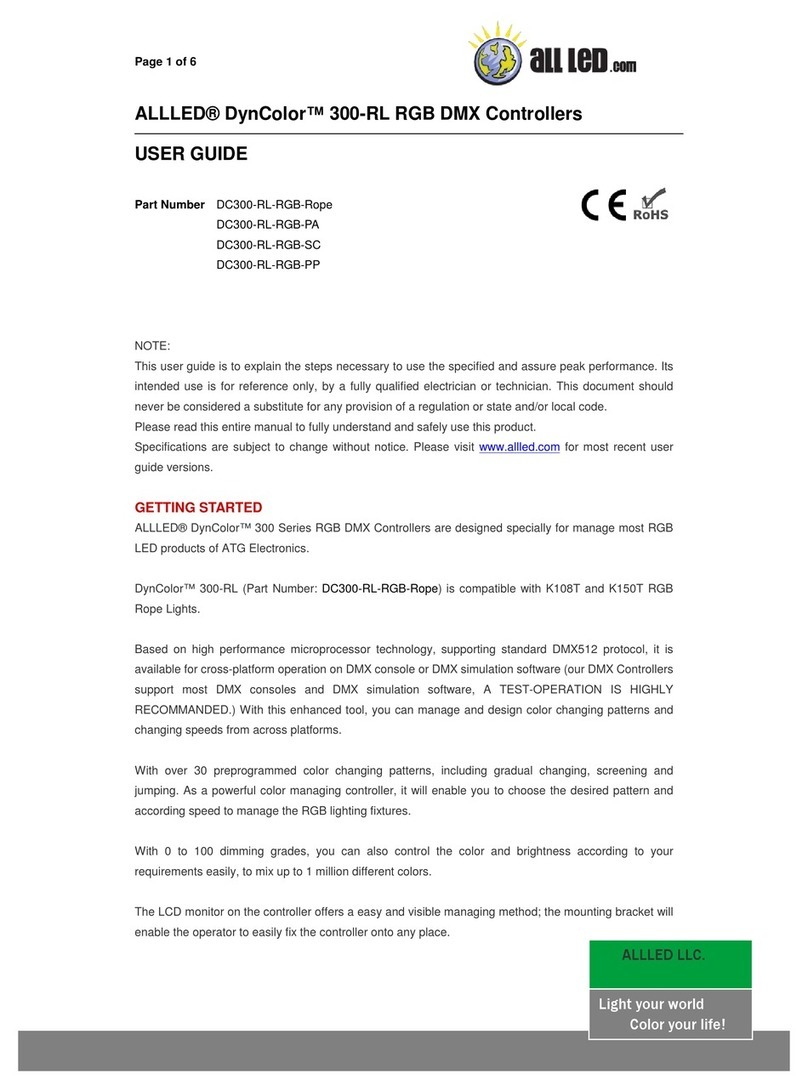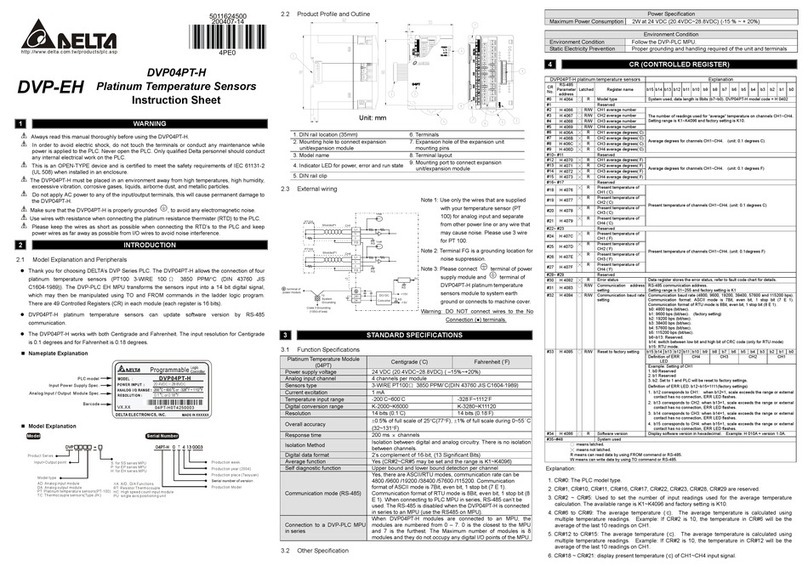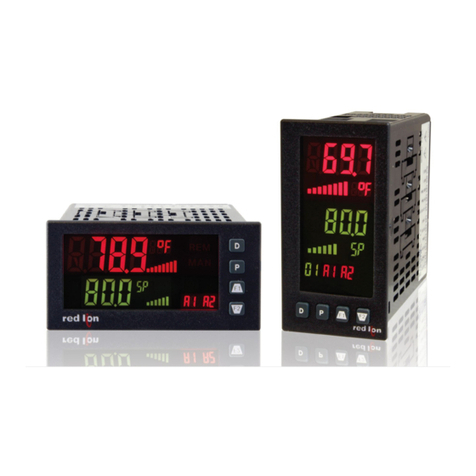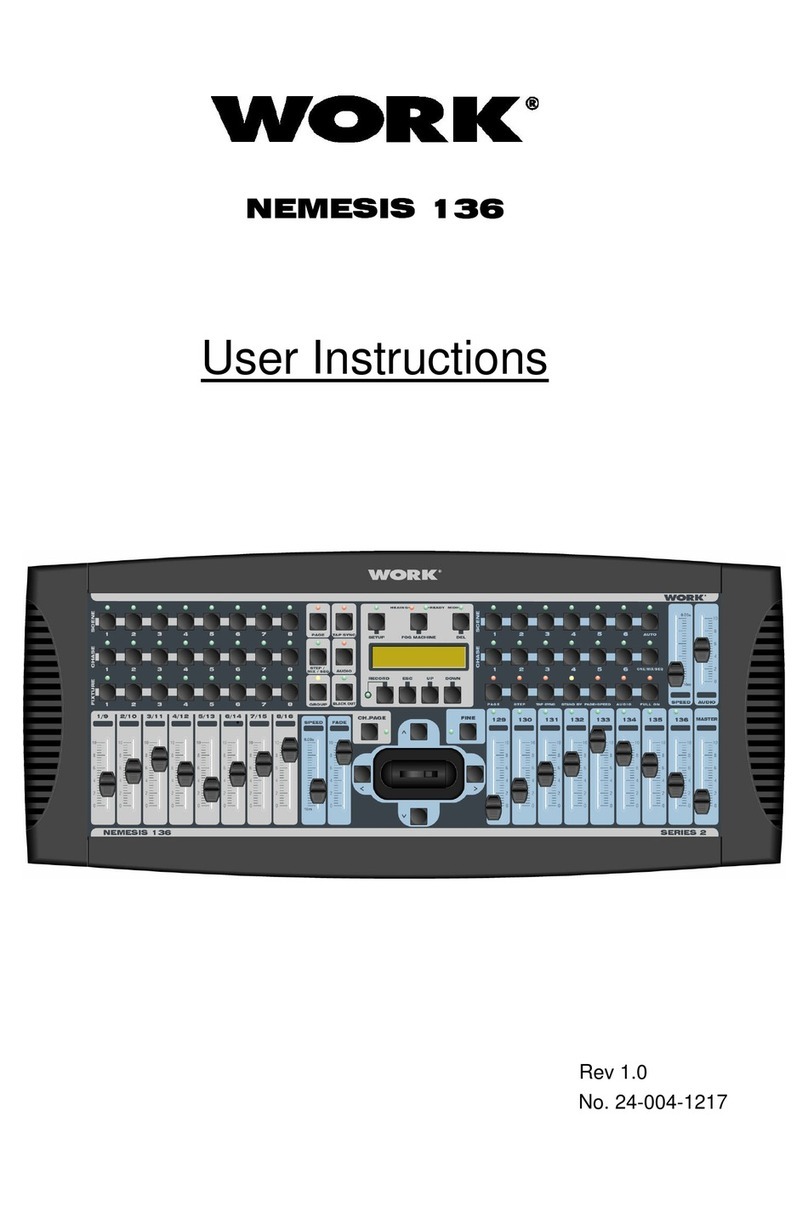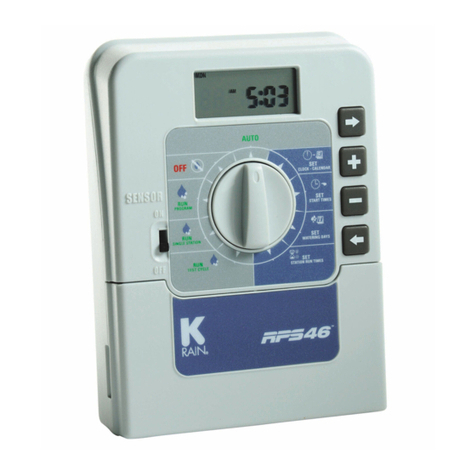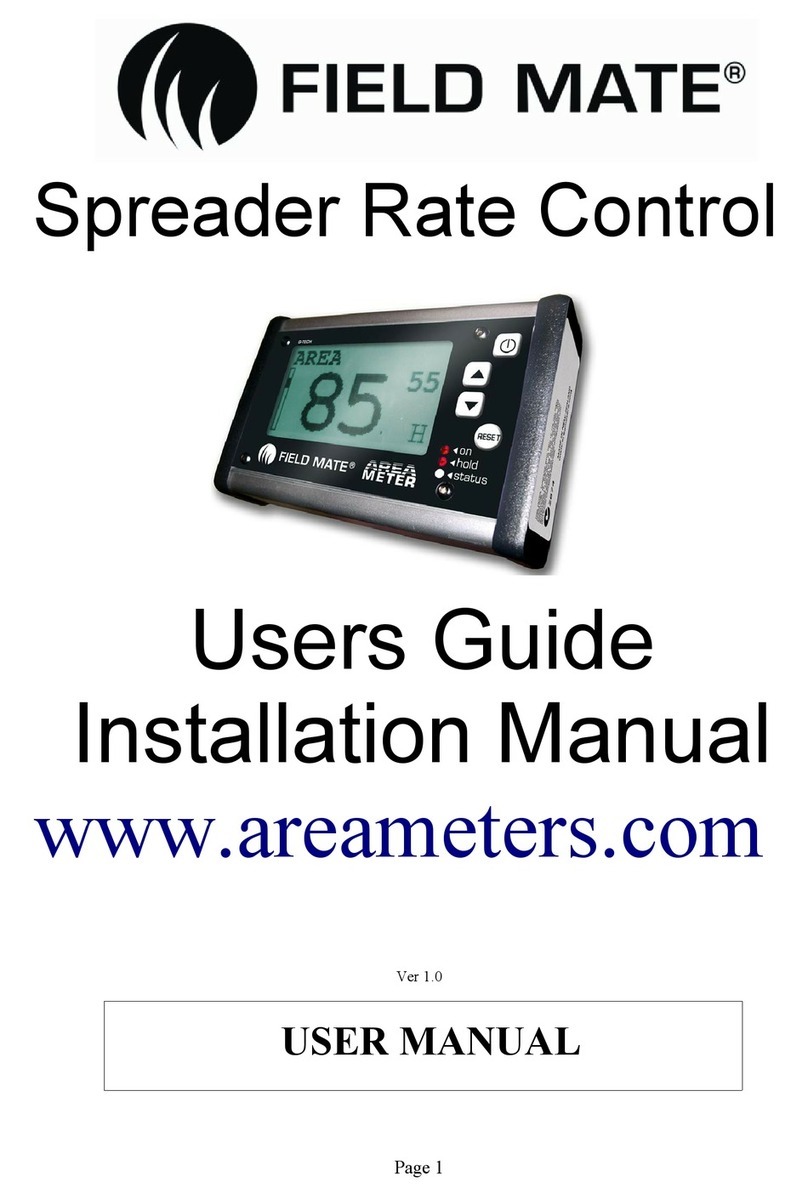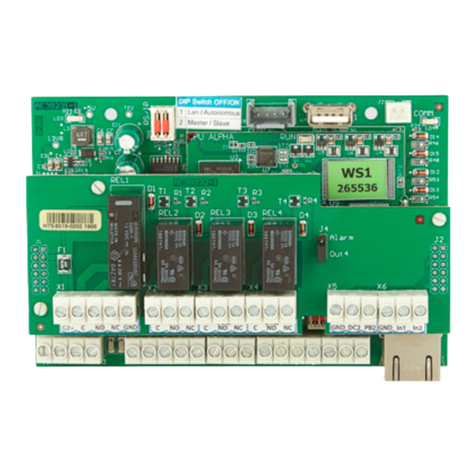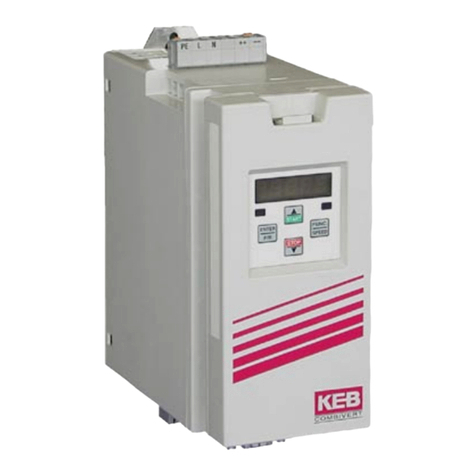Go Power GP-DURALITE-100 User manual

Solar Controller User Manual
________________________________________________________________________
© 2020 Go Power!
User Manual
30-amp Single Bank Solar Controller

SOLAR CONTROLLER
_______________________________________________________________________
2
© 2020 Go Power!
Contents
1.0 Solar Controller Overview 3
1.1 Introduction 3
1.2 System Voltage and Current 3
1.3 Battery Type 3
1.4 Regulatory Information 3
1.5 Specifications 4
2.0 IMPORTANT SAFETY INSTRUCTIONS 4
3.0 Choosing a Battery 6
4.0 DuraLite Kit Wiring Diagram 6
5.0 Operating Instructions 6
5.1 Battery Charging Profile Chart 8
6.0 Errors & Troubleshooting 9
7.0 Display Symbols 10
8.0 Frequently Asked Questions (FAQs) 10
9.0 Troubleshooting Problems 12
9.1 Problems with the Display 12
9.2 Problems with Voltage 13
9.3 Problems with Current 13
10.0 Limited Warranty 16
10.1 Repair and Return Information 16
11.0 Installation Template Error! Bookmark not defined.

SOLAR CONTROLLER
_______________________________________________________________________
3
© 2020 Go Power!
1.0 Solar Controller Overview
1.1 Introduction
A Solar Controller (or Charge Controller / Regulator) is an essential component
of your photovoltaic solar system. The Controller maintains the life of the battery
by protecting it from overcharging. When your battery has reached a 100% state
of charge, the Controller prevents overcharging by limiting the current flowing into
the batteries from your solar array.
The solar controller used in the DURALITE-100 kit features an LCD digital
display that shows the charge current of the solar array, system battery voltage
and battery state of charge.
1.2 System Voltage and Current
This controller is intended for use at 12 VDC system voltage and is rated for a
maximum continuous DC input current of 37.5A and input voltage of 35VDC.
Per National Electrical Code (NEC) article 690.7 and 690.8, PV module
nameplate ratings must be multiplied by required values (typically 1.25 for both
voltage and current) to obtain the maximum voltage and continuous current
available from the module.
Applying NEC factors, the maximum allowable nameplate PV Panel rated Isc is
30A (30A x 1.25 = 37.5A), and the maximum voltage, Voc is 28VDC (28VDC x
1.25 = 35VDC).
The voltage and current ratings of all equipment connected to PV panels must be
capable of accepting the voltage and current levels available from PV panels
installed in the field.
1.3 Battery Type
This solar controller is suitable for use with lead acid batteries (vented, GEL, or
AGM* type) as well as some lithium iron phosphate (LiFePO4) batteries that are
supplied with a Battery Management System (BMS).
*Use the Sealed battery profile for AGM
1.4 Regulatory Information

SOLAR CONTROLLER
_______________________________________________________________________
4
© 2020 Go Power!
1.5 Specifications
Description
Value
Dimensions (H x W x D):
178.5 × 105.5 × 48.3mm
7.02 x 4.15 x 1.90 in
Weight: 300g / 10.6 oz
Recommended Wire
Gauge:
#8 AWG
Warranty: 5 years
•PWM Charging
•4 Battery Charging
profiles
•4 Stage Charging
•Displays Charging
Current, Battery
Voltage and Battery
State of Charge
•Reverse Polarity
protected
•Temperature
Compensated
•RoHS Compliant,
environmentally safe
•Accepts up to 3
DuraLite Kits (300
watts of solar at 12
volts)
Nominal System Voltage
12 VDC
Charging Output Voltage
Range Battery 1
9.0 – 14.9 VDC
Battery Input
Voltage Range
8V
~
32V
Rated Charge Current
30A
Max. PV Short Circuit
Current
30A
Max. PV Open
Circuit Voltage
50V
Battery Type
Sealed (AGM), Gel, Flooded,
Lithium 1 (12V), and Lithium 2 (24V)
Self-consumption
≤4.2mA/12V;≤2.6mA/24V
Temperature
Compensate Coefficient
-3mV/℃/2V(Default)
Charge Circuit
Voltage Drop
0.21V
Operating Consumption
(Display backlight on)
15mA
Operating Consumption
(Display backlight off)
6mA
Battery Types Supported
Vented and Sealed (GEL, AGM etc.)
Lead Acid
Protections
Battery Reverse Polarity, PV Reverse
Polarity, Over Temperature, PV Short
Circuit, PV Over Current, PV Over
Voltage,
2.0 IMPORTANT SAFETY INSTRUCTIONS
SAVE THESE INSTRUCTIONS
THIS MANUAL CONTAINS IMPORTANT INSTRUCTIONS FOR THE
DURALITE KIT AND SOLAR CONTROLLER THAT SHOULD BE
FOLLOWED DURING KIT USE AND MAINTENANCE.
•Read this manual in its entirety before using the DuraLite kit for
the first time.
•DO NOT GET WET. Bring in the DuraLite kit when it rains.
•Use only with approved DuraLite connections and harnessing.

SOLAR CONTROLLER
_______________________________________________________________________
5
© 2020 Go Power!
•Please cut off all connections of the PV array, fuses or breakers
which close to the battery before the controller installation and
adjustment.
•Power connections should remain tight to avoid excessive
overheating
•No user serviceable component inside the controller. DO NOT
disassemble or attempt to repair the controller.
Disconnect all
power sources
Electricity can be very dangerous. Installation
should be performed only by a licensed
electrician or qualified personnel.
Battery and wiring
safety
Observe all safety precautions of the battery
manufacturer when handling or working
around batteries. When charging, batteries
produce hydrogen gas, which is highly
explosive.
Wiring connections
Ensure all connections are tight and secure.
Loose connections may generate sparks and
heat. Be sure to check connections one week
after installation to ensure they are still tight.
Work safely
Wear protective eyewear and appropriate
clothing during installation. Use extreme
caution when working with electricity and
when handling and working around batteries.
Observe correct
polarity
Reverse polarity of the Battery 1 terminals will
cause the controller to give a warning tone.
Reverse connection of Battery 2 terminals will
not cause an alarm. However, the controller
will not charge or display information for
Battery 2 on the LCD. The controller will not
function unless Battery 1 terminals are
connected to a battery with proper polarity.
Failure to correct this fault could damage the
controller.
Do not exceed the
SOLAR
CONTROLLER max
current ratings
The maximum current of the solar system is
the sum of parallel-connected PV module–
rated short circuit Currents (Isc) multiplied by
1.25. The resulting system current is not to
exceed 37.5A. If your solar system exceeds
this value, contact your dealer for a suitable
controller alternative.
Do not exceed max
voltage ratings
The maximum voltage of the array is the sum
of the PV module–rated open-circuit voltage of
the series connected modules multiplied by
1.25 (or by a value from NEC 690.7 provided
in Table 690.7 A). The resulting voltage is not
to exceed 35V. If your solar system exceeds
this value, contact your dealer for a suitable
controller alternative.

SOLAR CONTROLLER
_______________________________________________________________________
6
© 2020 Go Power!
3.0 Choosing a Battery
The SOLAR CONTROLLER is suitable for use with lead acid batteries (vented,
GEL, or AGM type) as well as some lithium iron phosphate (LiFePO4) batteries
that are supplied with a Battery Management System (BMS). If using lithium ion,
it must be lithium iron phosphate (LiFePO4) chemistry with a BMS. No other
chemistries are compatible.
Lithium batteries typically have maximum allowed charge currents. These
maximums typically decrease in cold temperatures. SOLAR CONTROLLER does
not limit current for these restrictions, and system design of the solar array must
account for this.
Be sure to follow all battery manufacturer safety instructions.
4.0 DuraLite Kit Wiring Diagram
The SOLAR CONTROLLER Maximum 37.5A rating is based on a 30-amp total
maximum short circuit current rating (Isc) from the solar modules nameplate
ratings. The National Electric Code specifies the PV equipment/system rating to
be 125% of the maximum Isc from the PV module ratings (1.25 times 30 =
37.5A). E.G. Three modules in parallel with an Isc of 7 amps each equal a total
Isc input of 21 amps. When selecting PV modules for use with the SOLAR
CONTROLLER do not exceed a total nameplate Isc current of 30A. Solar
modules list the Isc amps on their nameplate label.
The controller will not work unless there is a battery connected
to the Battery 1 terminals.
WARNING: When the photovoltaic (solar) array is exposed to light, it
supplies a dc voltage to this equipment.
5.0 Operating Instructions
1) Automatic cycle interface
Display: PV voltage,PV current,PV power,Battery voltage and Battery temperature

SOLAR CONTROLLER
_______________________________________________________________________
7
© 2020 Go Power!
2) Clear the generated energy
Operation:
Step 1: Press the “SET” button and hold 5s under the PV power interface and the value is flashing.
Step 2: Press the “SET” button to clear the generated energy
3) Switch the battery temperature unit
Press the “SET” button and hold 5s under the battery temperature interface.
4) Battery type
Battery type
Sealed Gel Flooded User⑴
Set battery type by LCD⑴
Operation:
Step1: Press the “SET” button and hold 5s under the battery voltage interface.
Step2: Press the “MENU” button when the battery type interface is flashing.
Step3: Press the “SET” button to confirm the battery type.

SOLAR CONTROLLER
_______________________________________________________________________
8
© 2020 Go Power!
5.1 Battery Charging Profile Chart
Item
Sealed
Gel
Flooded
Lithium
Over Voltage Disconnect
Voltage 16.0V 16.0V 16.0V 14.6/29.2V
Charging Limit Voltage 15.0V 15.0V 15.0V 14.4/28.8V
Over Voltage Reconnect
Voltage
15.0V 15.0V 15.0V 14.4/28.8V
Equalize Charging
Voltage 14.6V —— 14.8V ——
Boost Charging Voltage 14.4V 14.2V 14.6V 14.4/28.8V
Float Charging Voltage 13.8V 13.8V 13.8V 14.0/28.0V

SOLAR CONTROLLER
_______________________________________________________________________
9
© 2020 Go Power!
Boost Reconnect
Charging Voltage 13.2V 13.2V 13.2V 13.2/26.4V
Low Voltage Reconnect
Voltage
12.6V 12.6V 12.6V 12.2/24.4V
Under Voltage Warning
Reconnect Voltage 12.2V 12.2V 12.2V 12.4/28.8V
Under Volt. Warning
Volt.
12.0V 12.0V 12.0V 12.0/24.0V
Low Volt. Disconnect Volt.
11.1V 11.1V 11.1V 11.0/22.0V
Discharging Limit Voltage 10.6V 10.6V 10.6V 10.5/21.0V
Equalize Duration 120min. —— 120min. ——
Boost Duration 120min.
120min.
120min. 120min.
1. When the battery type is sealed, gel, flooded, the adjusting range of
equalizing duration is 0 to180min and boost duration is 10 to180min.
2. When setting a lithium battery type, (for example: a LiFePO4) use these rules
when setting voltage parameters.
•Over Voltage Disconnect Voltage > Charging Limit Voltage ≥ Equalize
Charging Voltage ≥ Boost Charging Voltage ≥ Float Charging Voltage >
Boost Reconnect Charging Voltage.
•Over Voltage Disconnect Voltage > Over Voltage Reconnect Voltage
•Low Voltage Reconnect Voltage > Low Voltage Disconnect Voltage ≥
Discharging Limit Voltage.
•Under Voltage Warning Reconnect Voltage > Under Voltage Warning
Voltage ≥ Discharging Limit Voltage.
•Boost Reconnect Charging voltage > Low Voltage Disconnect Voltage.
6.0 Errors & Troubleshooting
No Power to LCD Screen
Solution 1
Check the connection between the DuraLite Kit and the controller, and the
controller and the battery. The controller requires a minimum voltage of 8v to run.

SOLAR CONTROLLER
_______________________________________________________________________
10
© 2020 Go Power!
Solution 2
Your battery may be too far discharged to accommodate the controller. Keep the
solar kit plugged in and placed in full sun for a few hours and try the controller
again.
Flashing
Solution
This is an Overvoltage Error. The battery voltage is too high. Disconnect the
DuraLite kit and plug in a power draw to lessen the voltage in the battery.
Flashing
Solution
This is an Over Discharge Error. The battery voltage is too low. Connect the
DuraLite kit to charge the battery.
7.0 Display Symbols
Icon
Motion
Issue
Solid
The system is normal but not
charging
Energy bars are
Flashing
Charging
Solid Full
Flashing Battery Overvoltage
Flashing Battery Over Discharge
8.0 Frequently Asked Questions (FAQs)
Before a problem is suspected with the system, read this section. There are
numerous events that may appear as problems but are in fact perfectly normal.
Please visit https://gpelectric.com/support/ for the most up-to-date FAQs and
troubleshooting videos.
It seems like my flooded batteries are losing water over time.

SOLAR CONTROLLER
_______________________________________________________________________
11
© 2020 Go Power!
Flooded batteries may need to have distilled water added periodically to replace
fluid loss during charging. Excessive water loss during a short period of time
indicates the possibility of overcharging or aging batteries.
When charging, my flooded batteries are emitting gas.
During charging, hydrogen gas is generated within the battery. The gas bubbles
stir the battery acid allowing it to receive a fuller state of charge.
Important: Ensure batteries are in a well-ventilated space.
My voltmeter shows a different reading than the SOLAR CONTROLLER
display.
The meter value on the SOLAR CONTROLLER display is an approximate
reading intended for indication purposes only. There is an approximate 0.1 VDC
inherent error present that may be accentuated when compared with readings
from another voltmeter.
There may be a slight difference between the battery voltage displayed on the
SOLAR CONTROLLER display and the battery voltage measured at the battery
terminals. When troubleshooting using a voltmeter, check both the battery
voltage at the SOLAR CONTROLLER terminals and battery voltage at the
battery terminals. If a difference of more than 0.5 VDC is noted, this indicates a
large voltage drop possibly caused by loose connections, long wire runs, small
wire gauge, faulty wiring, a faulty voltmeter or all the above. Consult the
Suggested Minimum Wire Gauge chart in Section 6 for wiring suggestions and
check all connections.
For advanced users:
The SOLAR CONTROLLER makes voltage measurement adjustments based on
resistance it detects at the battery terminals. In addition to resistance in the
wires, batteries also have an internal resistance due to chemical properties. The
controller cannot distinguish between these two sources of resistance. It will
compensate up to 250mV in the displayed value.

SOLAR CONTROLLER
_______________________________________________________________________
12
© 2020 Go Power!
Why does the voltage fluctuate so much when charging with the LITHIUM
setting?
Lithium batteries contain smaller battery cells. The voltages of these individual
cells must be balanced during the charging process by the Battery Management
System (BMS). Imbalances will cause fluctuations in the battery voltage
measurement, but this will stabilize as the cells are charged and balanced.
Additionally, lithium batteries have higher resistance than lead acid batteries.
This affects the charge controller’s battery voltage measurements and its
compensation for wire resistance.
Reduce wire inductance which may also cause voltage fluctuations. Keep battery
wires close together, or gently twist positive and negative wires together.
9.0 Troubleshooting Problems
How to Read this Section
Troubleshooting Problems is split into three sub-sections, grouped by symptoms
involving key components. A multimeter or voltmeter may be required for some
procedures listed.
It is imperative all electrical precautions stated in the Warning Section and
outlined in the Installation Section are followed. Even if it appears the system is
not functioning, it should be treated as a fully functioning system generating live
power.
9.1 Problems with the Display
Display Reading: Blank
Time of Day: Daytime/Nighttime
Possible Causes:
Battery or fuse connection and/or solar array connection
(Daytime only) or battery or fuse connection (Nighttime only).
How to tell:
Check the voltage at the controller battery terminals with a voltmeter and
compare with a voltage reading at the battery terminals.
If there is no voltage reading at the controller battery terminals, the problem could
be a fuse, or the wiring between the battery and the controller. If the battery
voltage is lower than 6 volts the controller will not function.
For the solar array, repeat steps 1 and 2 substituting all battery terminals with
solar array terminals.
Remedy:

SOLAR CONTROLLER
_______________________________________________________________________
13
© 2020 Go Power!
Check all connections from the controller to the battery including checking for
correct wire polarity. Check that all connections are clean, tight, and secure.
Ensure the battery voltage is above 6 volts.
Display Reading: Nighttime
Time of Day: Daytime
Possible Causes:
Panel is covered by something; PV panel is too dirty to supply a high enough
voltage to charge the battery; PV panel is not connected.
Remedy:
Check the panel and to ensure it is not obscured. Clean the panel if it is dirty.
Check that PV cables are connected to the controller.
9.2 Problems with Voltage
Voltage Reading: Inaccurate
Time of Day: Daytime/Nighttime
Possible Cause:
Excessive voltage drop from batteries to controller due to loose connections,
small wire gauge or both.
How to tell:
Check the voltage at the controller battery terminals with a voltmeter and
compare with the voltage reading at the battery terminals.
If there is a voltage discrepancy of more than 0.5 VDC, there is an excessive
voltage drop.
Remedy:
Check all connections from the controller to the battery including checking for
correct wire polarity. Check that all connections are clean, tight, and secure.
Shorten the distance from the controller to battery or obtain larger gauge wire. It
is also possible to double up the existing gauge wire (i.e. two wire runs) to
simulate a larger gauge wire.
9.3 Problems with Current
Current Reading: 0 A
Time of Day: Daytime, clear sunny skies
Possible Cause:
Current is being limited below 1 Amp as per normal operation or
poor connection between solar array and controller.
How to tell:

SOLAR CONTROLLER
_______________________________________________________________________
14
© 2020 Go Power!
The State of Charge (SOC) screen is close to 100% and the Sun and Battery
icon are present with an arrow between.
With the solar array in sunlight, check the voltage at the controller solar array
terminals with a voltmeter.
If there is no reading at the controller solar array terminals, the problem is
somewhere in the wiring from the solar array to the controller.
Remedy:
Hold down the MAX BOOST Button for approximately 3 seconds to activate
Maximum Power Boost. This will allow the controller to charge batteries to 14.4
+/- 0.1 VDC (14.1 +/- 0.1 VDC Sealed/Gel) with all current the solar array is
producing.
Check all connections from the controller to the array including checking for
correct wire polarity. Check that all connections are clean, tight, and secure.
Continue with the solutions below for additional help on low current readings.
Current Reading: Less than expected
Time of Day: Daytime, clear sunny skies
Possible Causes:
1. Current is being limited below 1 Amp as per normal operation.
2. Incorrect series/parallel configuration and/or wiring connections and/or
wire gauge.
3. Dirty or shaded module or lack of sun.
4. Blown diode in solar module when two or more modules are connected
in parallel.
5. The battery is full.
How to tell:
1. Battery State of Charge screen is close to 100% and the Sun and
Battery icon are present with an arrow in between.
2. Check that the modules and batteries are configured correctly. Check all
wiring connections.
3. Modules look dirty, overhead object is shading modules or it is an
overcast day in which a shadow cannot be cast.
Avoid any shading no matter how small. An object as small as a
broomstick held across the solar module may cause the power
output to be significantly reduced. Overcast days may also cut
the power output of the module.

SOLAR CONTROLLER
_______________________________________________________________________
15
© 2020 Go Power!
4. Disconnect one or both array wires from the controller. Take a voltage
reading between the positive and negative array wire. A single 12 volt
module should have an open circuit voltage between 17 and 23 VDC. If
you have more than one solar module, you will need to conduct this test
between the positive and negative terminals of each module junction
box with either the positive or the negative wires disconnected from the
terminal.
Remedy:
2. Reconnect in correct configuration. Tighten all connections. Check wire
gauge and length of wire run. Refer to Suggested Minimum Wire Gauge
in Section 6.
3. Clean modules, clear obstruction or wait for conditions to clear.
4. If the open circuit voltage of a non-connected 12 volt module is lower
than the manufacturer’s specifications, the module may be faulty. Check
for blown diodes in the solar module junction box, which may be
shorting the power output of module.

SOLAR CONTROLLER
_______________________________________________________________________
16
© 2020 Go Power!
10.0 Limited Warranty
Go Power! warrants the SOLAR CONTROLLER for a period of five (5) years
from the date of shipment from its factory. This warranty is valid against defects
in materials and workmanship for the five (5) year warranty period. It is not valid
against defects resulting from, but not limited to:
•Misuse and/or abuse, neglect or accident
•Exceeding the unit’s design limits
•Improper installation, including, but not limited to, improper
environmental protection and improper hook-up
•Acts of God, including lightning, floods, earthquakes, fire, and high
winds
•Damage in handling, including damage encountered during shipment
This warranty shall be considered void if the warranted product is in any way
opened or altered. The warranty will be void if any eyelet, rivets, or other
fasteners used to seal the unit are removed or altered, or if the unit’s serial
number is in any way removed, altered, replaced, defaced, or rendered illegible.
10.1 Repair and Return Information
Visit https://gpelectric.com/support/ to read the “frequently asked questions”
section of our website to troubleshoot the problem. If trouble persists:
1. Fill out our online Contact Us form or Live Chat with us
2. Email techsupport@gpelectric.com
3. Return defective product to place of purchase

SOLAR CONTROLLER
_______________________________________________________________________
17
© 2020 Go Power!
© 2019 GO POWER!®
201 – 710 Redbrick St,
Victoria, British Columbia
Canada, V8T 5J3
MOBI_MAN_SOLAR CONTROLLER _RevF
gpelectric.com
Other manuals for GP-DURALITE-100
2
This manual suits for next models
2
Table of contents
Other Go Power Controllers manuals
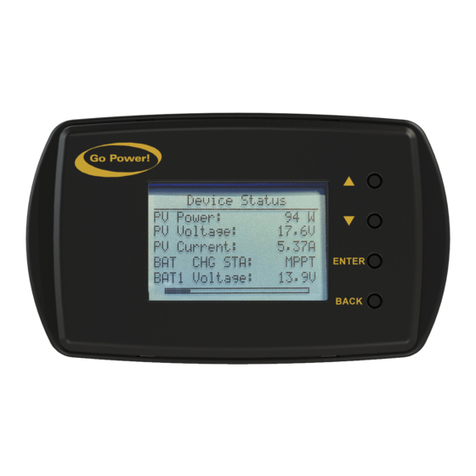
Go Power
Go Power GP-RVC-R User manual

Go Power
Go Power GP-PWM-10 User manual
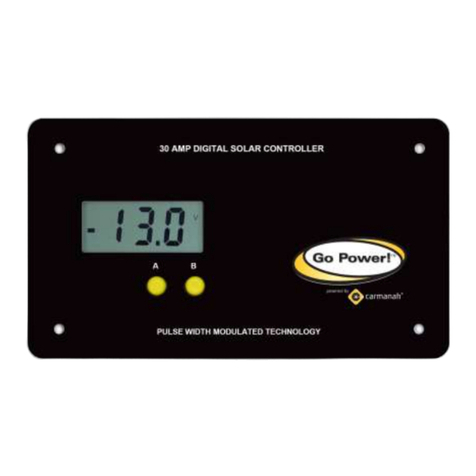
Go Power
Go Power GP-PWM-30 User manual
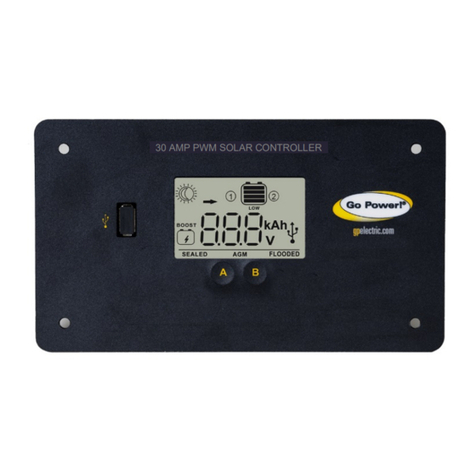
Go Power
Go Power GP-PWM-30-SB User manual
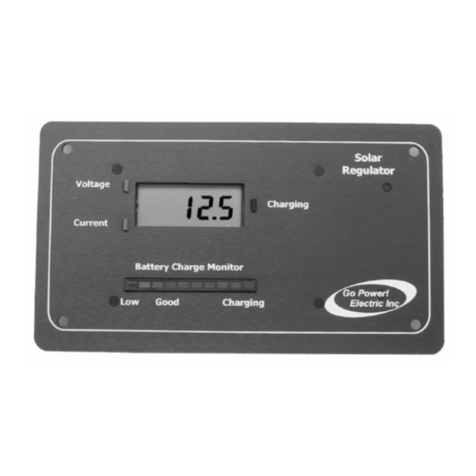
Go Power
Go Power GPR-25 User manual
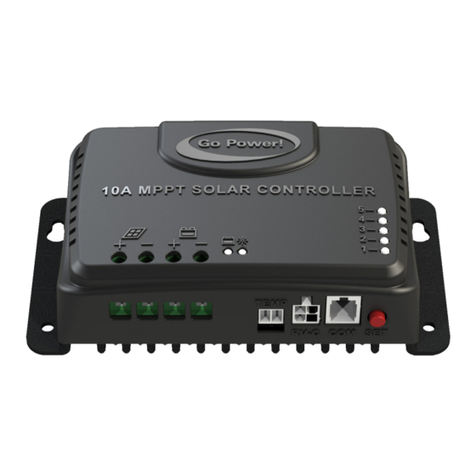
Go Power
Go Power 10 AMP RVC-MPPT User manual
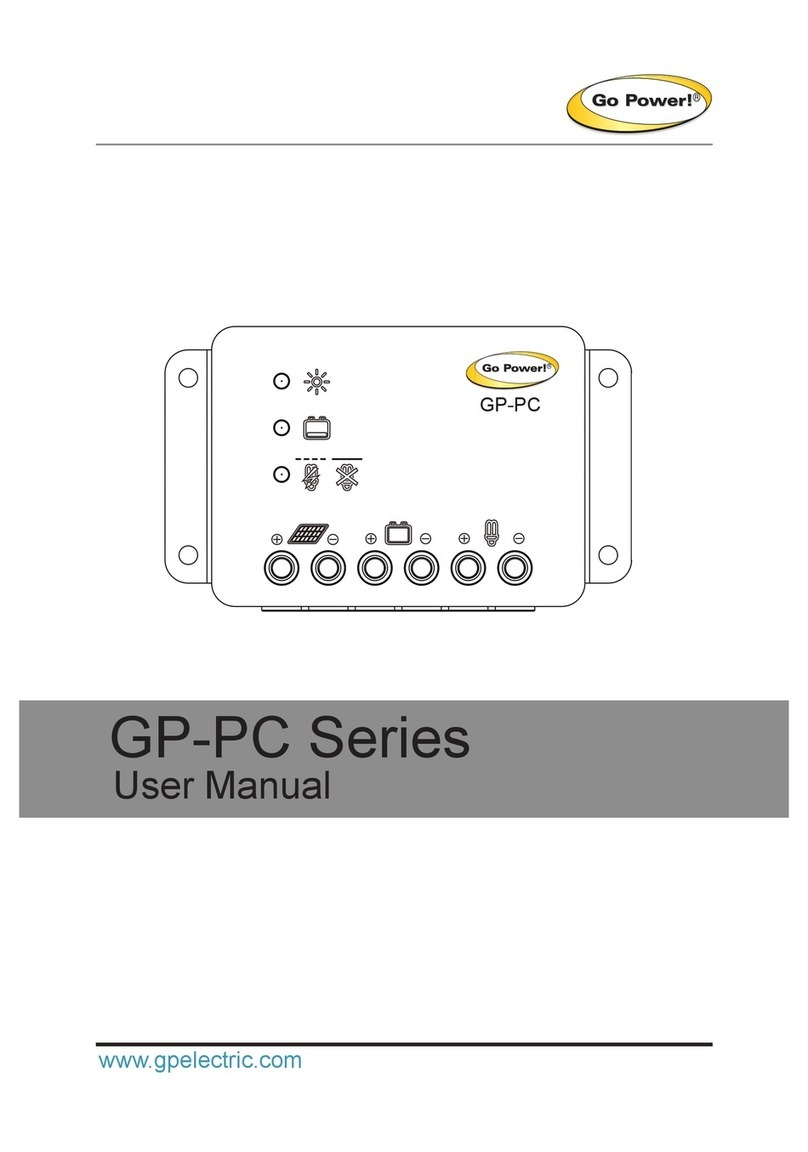
Go Power
Go Power GP-PC Series User manual
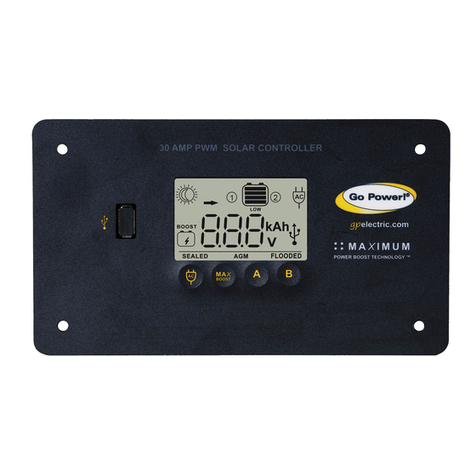
Go Power
Go Power GP-PWM-30-UL User manual
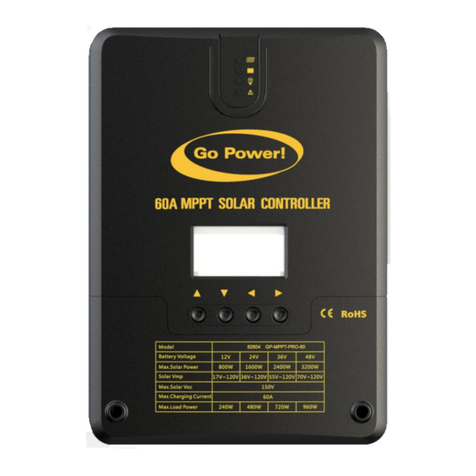
Go Power
Go Power MPPT-PRO Series User manual
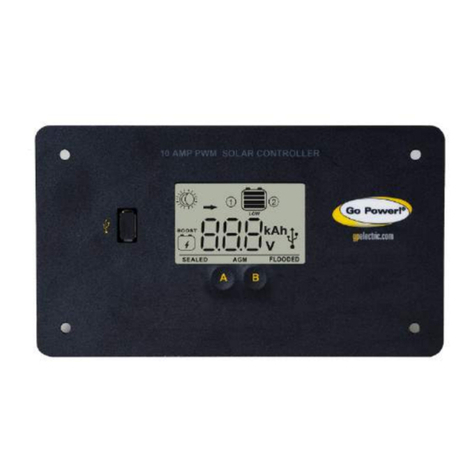
Go Power
Go Power GP-PWM-10-FM User manual


